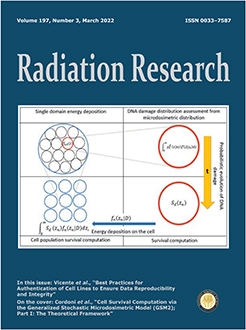Cell line misidentification and contamination are major contributors to the reproducibility crisis in academic research. Authentication of cell lines provides assurances of the data generated; however, commercially available cells are often not subjected to rigorous identification testing. In this study, commercially available cell lines underwent testing to confirm cell identity and purity. The methods reported here outline the best practices for cell line authentication. Briefly, a commercially available primary rabbit aortic endothelial cell line was purchased for the intent of producing target proteins necessary for generating species-specific recombinant antibodies. These rabbit-specific antibodies would then be utilized for the development of in-house enzyme-linked immunosorbent assays (ELISA) to evaluate blood-based biomarkers of vascular injury after total-body irradiation. To authenticate the cell line, cell identity and purity were determined by single tandem repeat (STR) testing, flow cytometry, polymerase chain reaction (PCR), and cytochrome c oxidase subunit 1 (CO1) DNA Barcoding in-house and/or through commercial vendors. Fresh cells obtained from a New Zealand White rabbit (Charles River, Wilmington, DE) were used as a positive control. The results of STR and flow cytometry analyses indicated the cells were not contaminated with human or mouse cells, and that the cells were not of endothelial origin. PCR demonstrated that cells were also not of rabbit origin, which was further confirmed by a third-party vendor. An unopened vial of cells was submitted to another vendor for CO1 DNA Barcoding analysis, which identified the cells as being purely of bovine origin. Results revealed that despite purchase through a commercial vendor, the cell line marketed as primary rabbit aortic endothelial cells were of bovine origin. Purity analysis found cells were misidentified rather than contaminated. Further investigation to determine the cell type was not performed. The most cost-effective and efficient methodology for confirming cell line identity was found to be CO1 DNA Barcoding performed by a commercial vendor.
How to translate text using browser tools
3 December 2021
Best Practices for Authentication of Cell Lines to Ensure Data Reproducibility and Integrity
Elisabeth Vicente,
Megan Lesniewski,
Diana Newman,
Zeljko Vujaskovic,
Isabel L. Jackson
ACCESS THE FULL ARTICLE

Radiation Research
Vol. 197 • No. 3
March 2022
Vol. 197 • No. 3
March 2022




